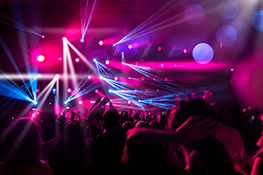Stage Lighting: Beyond the Basics – Advanced Techniques and Strategies
Understanding Color Temperature and its Dramatic Impact
Beyond simply choosing a color, understanding color temperature is crucial for crafting mood and atmosphere. The Kelvin (K) scale measures color temperature, with lower values representing warmer tones (reds and oranges) and higher values representing cooler tones (blues and whites). Mastering this allows you to create a sunset scene with warm, inviting light contrasting with the cool, harsh glow of moonlight on a character’s face, adding depth and emotional resonance to your production. Experiment with mixing color temperatures for unique effects, such as mixing warm tungsten with cool LED for a nuanced, realistic ambiance. Consider how the color temperature interacts with the costumes and set design for a cohesive visual narrative.
The Art of Light Shaping with Gobos and Fresnels
Gobos (go-between) are stencils placed in front of lighting instruments to project patterns and images onto the stage. From simple geometric shapes to complex, customized designs, gobos add visual interest and thematic depth. Explore different gobo materials and techniques to achieve varying levels of sharpness and intensity. Pair gobo projection with Fresnel lenses, which offer a soft-edged, easily adjustable beam, to create stunning effects, such as projecting a tree pattern onto a backdrop to enhance a forest scene. The versatility of Fresnels and gobos combined allows for the creation of highly detailed and evocative lighting designs.
Mastering Movement: Automated Lighting and Dynamic Effects
Automated lighting fixtures, with their pan and tilt capabilities, open up a world of dynamic possibilities. Learn to program smooth, precise movements to follow actors, create dramatic reveals, and build tension. Utilize cues and sequences to control the timing and intensity of these movements, ensuring they perfectly synchronize with the action on stage. Explore the use of chases and cross-fades to create exciting transitions and visual spectacles. Effective automated lighting requires precision and creativity, transforming a static stage into a living, breathing environment.
Advanced Lighting Techniques for Specific Genres
Different theatrical genres demand unique lighting approaches. Musical theatre often utilizes vibrant, energetic lighting to complement the music and dance, requiring skillful use of color washes and fast-paced changes. Drama often benefits from more subtle, nuanced lighting, utilizing shadows and contrast to emphasize mood and emotion. For example, utilizing backlighting can create a sense of isolation or mystery, while side lighting can emphasize texture and form. Understanding these genre-specific needs is key to crafting lighting that enhances the storytelling.
Integrating Lighting with Sound and Other Stage Elements
Truly exceptional lighting design isn’t about illumination alone; it’s about integration. Consider how your lighting design interacts with sound effects, music, and other elements of the production. Synchronizing lighting cues with specific musical moments or sound effects can amplify emotional impact. For example, a sudden blackout timed with a dramatic musical crescendo can generate a powerful response from the audience. Explore how lighting can enhance the overall storytelling experience through seamless integration with all aspects of the production.
The Future of Stage Lighting: Technological Advancements
The world of stage lighting is constantly evolving. Explore the latest advancements in LED technology, offering greater energy efficiency and color control. Learn about the possibilities of moving head fixtures with advanced features, such as gobo rotation and prism effects. Understand the implications of new software and control systems, which are continuously improving the ease and precision of programming complex lighting designs. Stay informed about these advancements to stay ahead of the curve and utilize the latest tools for innovative lighting design.
This exploration of advanced stage lighting techniques and strategies is intended to inspire and educate those looking to elevate their craft. By mastering these elements, lighting designers can transform the stage into a canvas of visual storytelling.


 Auditorium Construction Services
Auditorium Construction Services 